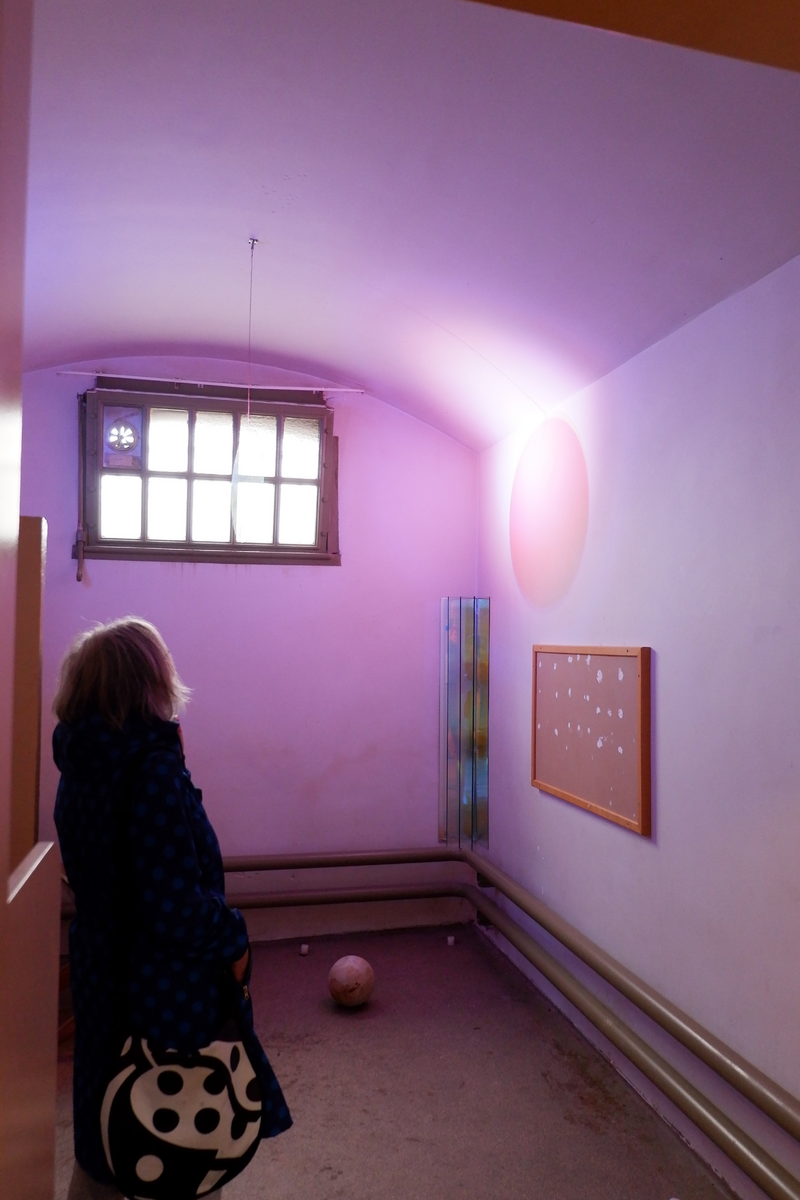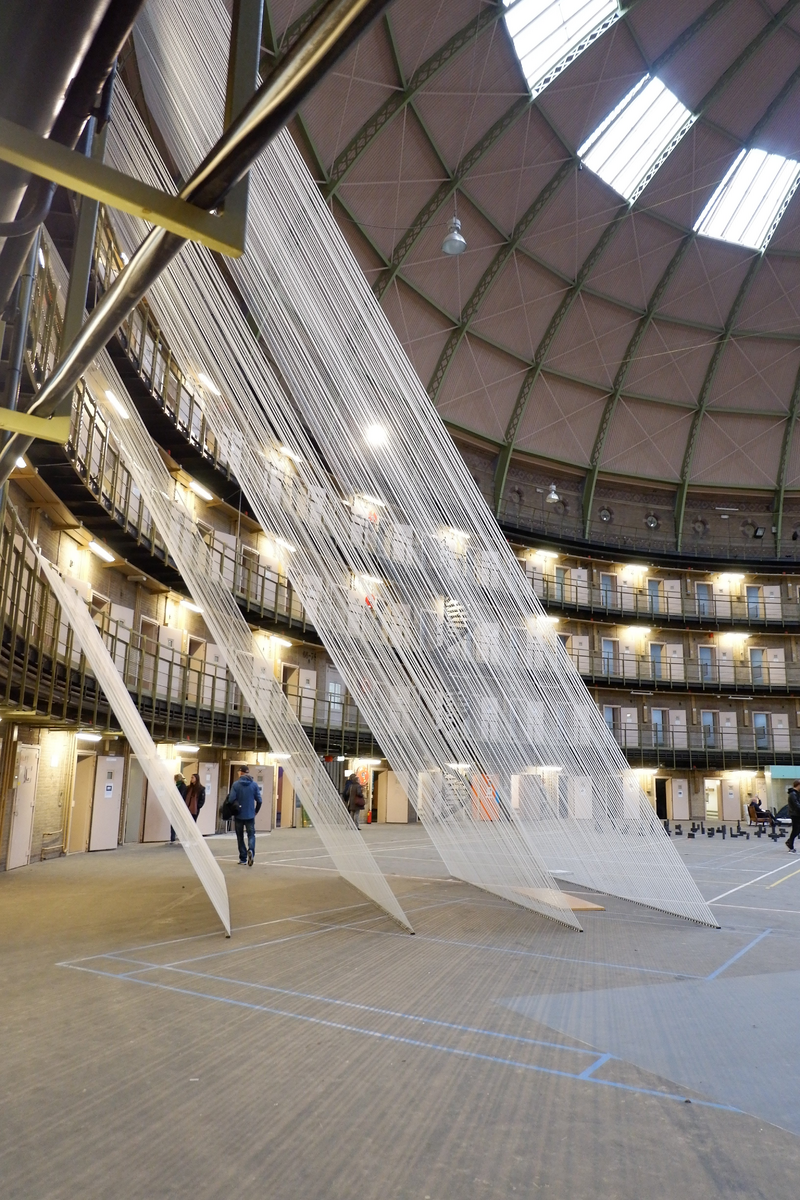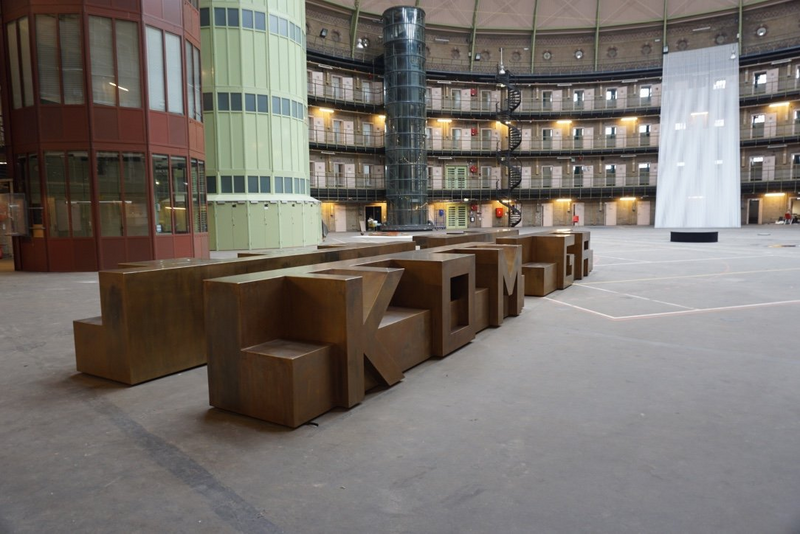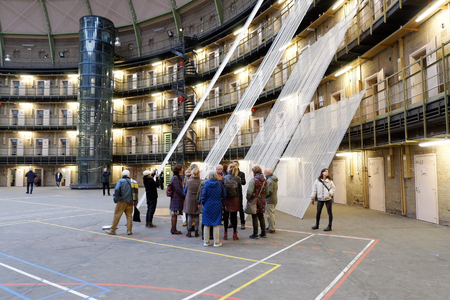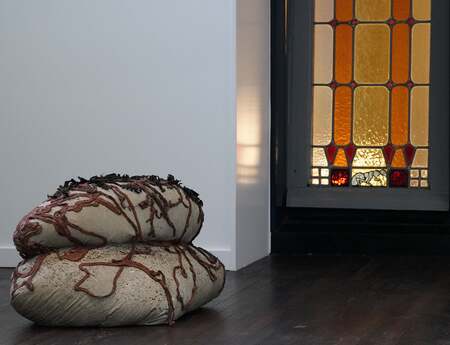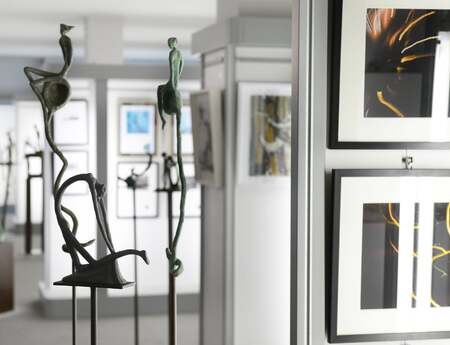If walls could talk…
Our dialogue “Architectural Healing” in the De Koepel prison in Haarlem got under our skin. In the old Panopticon building, artists tried to find answers to the almost unspeakable questions that such a building poses to us who remain. Some impressions.
The first impression when you enter the old prison De Koepel in Haarlem is a depressing one. The walls seem to be dripping with emotion, despair echoes from the low ceilings. The 1901 building was one of the few Panopticon prisons developed for a single purpose by British philosopher and social reformer Jeremy Bentham: Control.
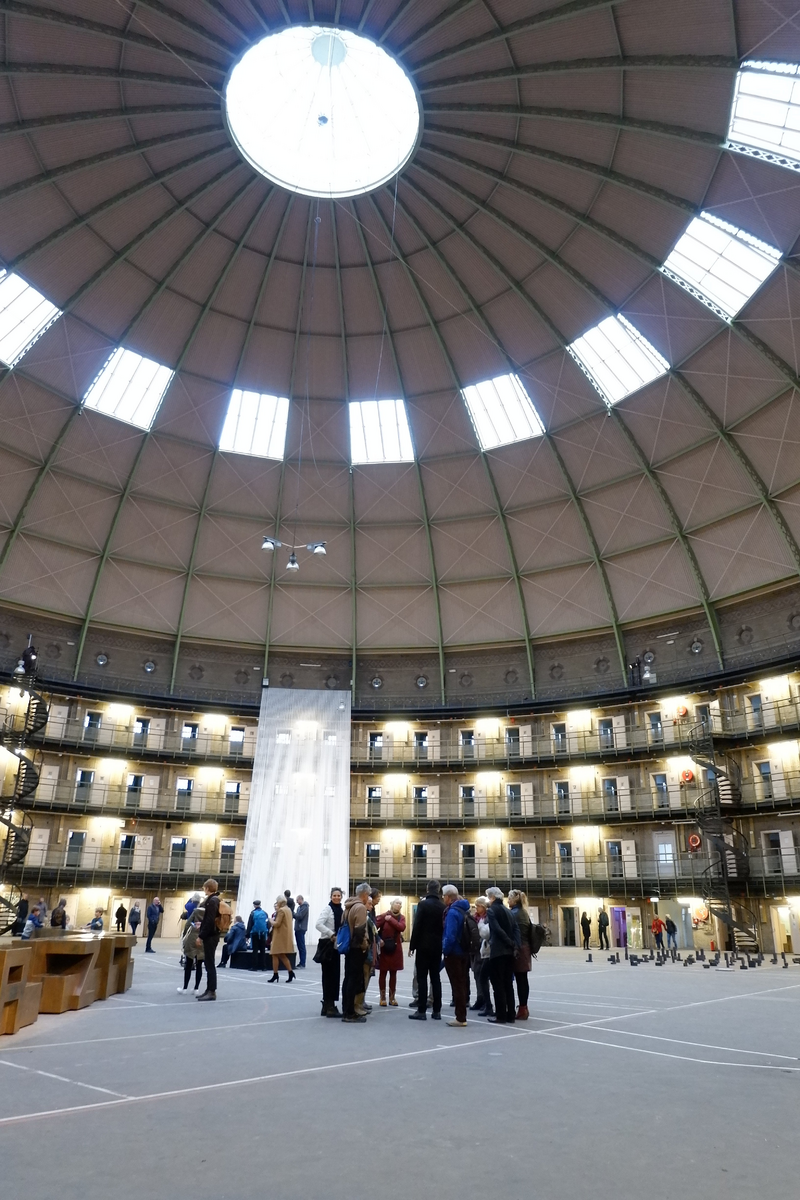
Bentham's plans for such buildings date back to the late 18th century, but proved hardly feasible. His idea was to create a building in which all persons could be watched at all times by a single guard invisible to them. Nowadays easily achievable by installing cameras, but in the 18th and 19th centuries it was an architectural challenge. In Haarlem this was solved by means of a large central tower from which the cells arranged in a circle around it could be monitored at all times.
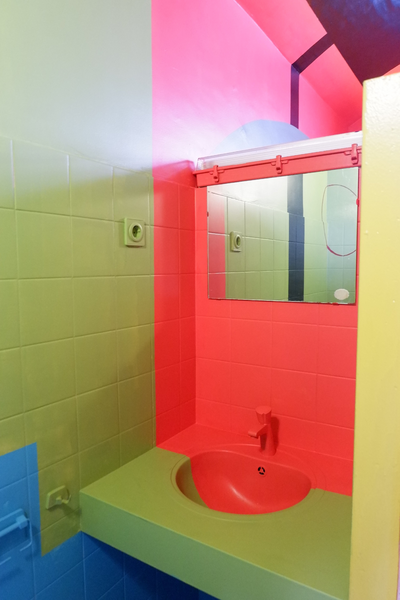
For the modern observer, this architecture alone evokes a sense of Big Brother. It was this emotionally charged atmosphere that magically attracted Bastiaan Gribling: the trained architect, as a curator, has set himself the task of filling special buildings with a tragic history with art and thus interacting with the oppressive past. His idea of Architectural Healing wants to integrate past injustice and suffering into modern perception and reconcile with it. History cannot be erased, but it can be overcome.
Bastiaan's guidance of our group through the exhibition left behind a very special feeling: the cells that previously isolated people completely from the outside world are now inhabited by works of art and have been filled with life by us visitors. We were able to talk to each other and look at each other here – a luxury that the prisoners were denied. They spent 23 hours a day alone in their cells; at their one hour yard time they had to wear a mask. Identities were literally erased.
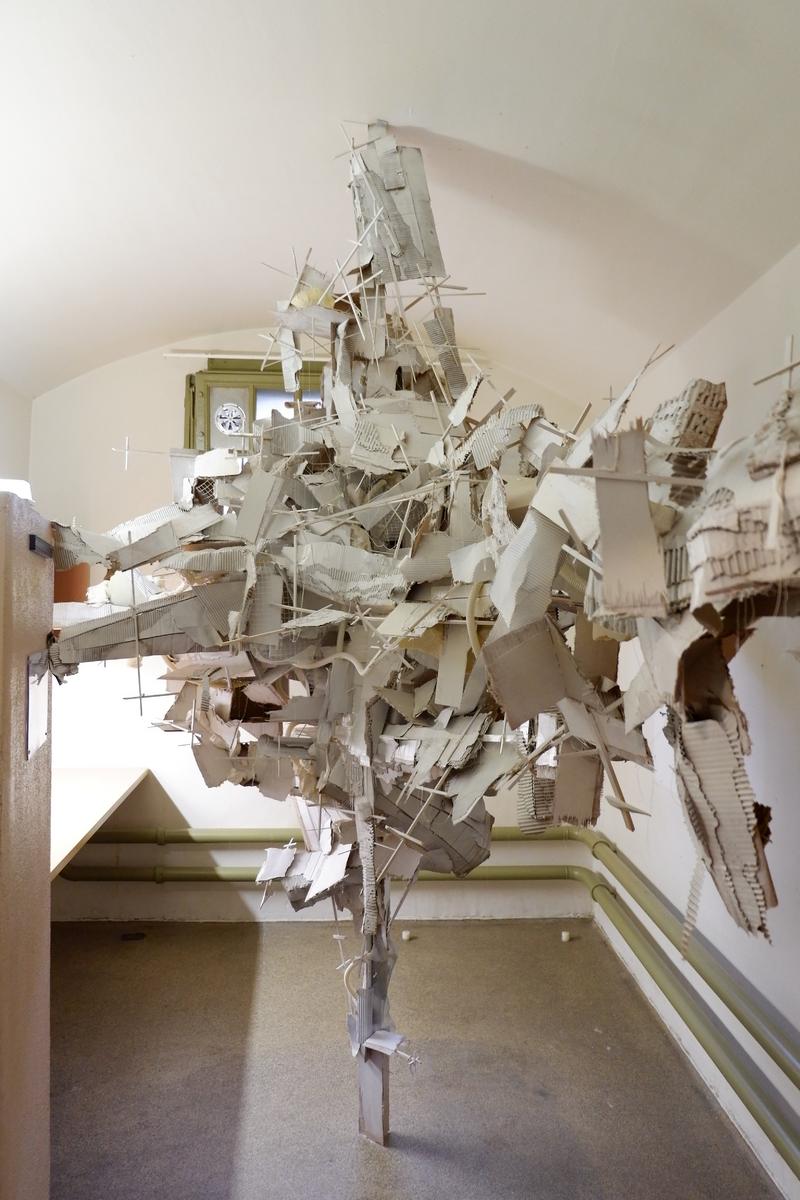
It is not a beautiful exhibition that we are experiencing, but an important and emotional one: the atmosphere that seems nothing but oppressive at the beginning changes with every work of art that we see. Bastiaan not only guides us through an exhibition, he also guides us through our coping process. A building like De Koepel has to be overcome – and nothing can support us in that better than art!
The Haarlem prison will be converted into an educational institution next year. Its history will not be forgotten, but a new chapter will be opened. With new hope, light and life. Architectural Healing certainly has its own part to play in that.
